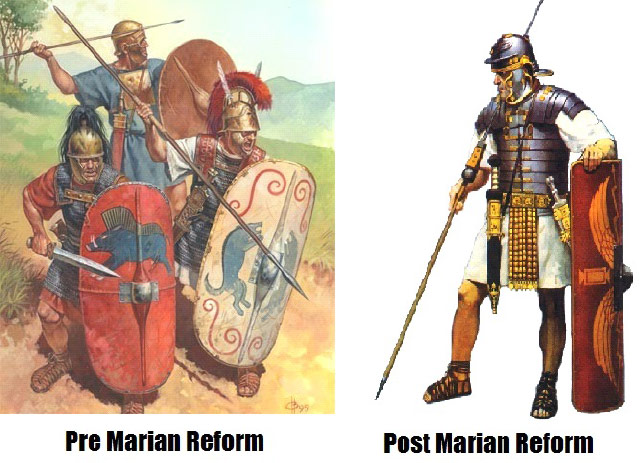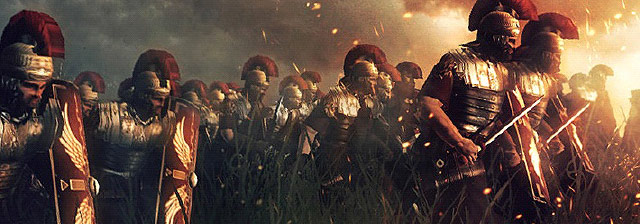Why do fans of Roman History hate games like Ryse so much? Allow me to divulge some information regarding the Legions of Rome that may clue you in.
The Roman Legions. A capable force of warriors from the ancient world who were once (and by many, still to this day) regarded as the ultimate fighting force in all of recorded history. Know that it’s not hyperbole when I say that they were rightly feared by those who opposed the mighty Roman people. The Roman Legions were one of the most important parts of ancient history, having brought the Roman culture to far reaching parts of the world and having eradicated entire ethnicities for the benefit of “Roma”. The Roman Empire is something that historians and enthusiasts still study to this day, more important however, is the great focus that we put on the soldiers of the Legions.
When you imagine a Roman Soldier, you no doubt instantly picture a tall, well muscled man wearing segmented plate armour (Lorica Segmentata) with a red tunic beneath it. A silver or bronze helmet (Galea) with a large red crest. A short sword (Gladius), and a broad, straight edged shield (Scutum). This is however, not wholly accurate. The soldier you are picturing is actually a Centurion from an era that we call “Post Marian Reform”. This man was a professional soldier and officer in the ranks of the Legion who would have command of anywhere between 80 to 480 men (a cohort). Why then is it that every soldier we see looks like this?
In modern day video games, the Roman Legions are portrayed as being an unrivalled fighting force capable of sweeping aside any opposition with minimal effort on their part. This is perhaps best shown in Creative Assembly’s, Rome: Total War in which any battle can be won easily enough by deploying enough Roman soldiers, be it the low ranking Hastati or the more experienced Principes. So while you think of the Centurion, you should really be picturing the Hastati, the basic Roman infantry from before the Marian Reforms. Who wore little to no actual armour, what he did wear mostly consisted of chainmail and a helmet. He also supplied it himself, so two soldiers rarely looked the same.
In short, the soldier on the right is easier to replicate than the soldiers on the left.
But the question still remains, why do we only see post Marian reform soldiers? Well, there are a few main reasons but primary amongst them is convenience.
Before the Reforms of Gaius Marius, Roman soldiers had to be exactly that. Roman.
If you wanted to serve in the army, you had to be a member of the fifth census class or higher, this means you had to be of a certain social standing. You had to have property worth 3,500 Sestertius and you had to supply your own weapons and armour. Not exactly “Triple A” game material. After Gaius Marius (Roman General and Statesman) reformed the Legions, any man who was fit enough to serve could join the Legion. His weapons and armour were standardized to include everything mentioned above as well as 2 Pila (throwing spears) and given standardized training in combat tactics and unit cohesion. All of this was supplied by the state and paid for from the treasury, thus ensuring that each soldier was a formidable combatant outfitted with the best weapons, armour and training available.
And this is the sole reason most games only show us post Marian soldiers. Because the picturesque sight of walls of shimmering metal and emblazoned red shields topped of with crested helmets appeals to us. The romanticised notion of the Romans is that they fought as brothers in arms, as a single unit of men who fought and died together like heroes of old that were an enlightened people. That’s only half true. In actual fact, a Legionary was taught to fight as a single combatant, but function as a unit. Boiled down to its core that means, block to your left and stab to your right.
Take note that all the soldiers look identical, repeated textures and art assets means less strain on the console, thus boosting performance.
Take Ryse for example. The latest offering from Crytek puts us in the shoes of the Roman General, Marius Titus. It was very rare for a Roman General to be present in the front lines of battle unless accompanied by The Eagle Cohort, but a General also wore the most decorated armour and had the most beautifully crafted weapons. So to show off their new graphical engine, we get post Marian soldiers and play as a General. A standardized Roman legionary wearing all the armour mentioned above is much easier to replicate on screen than a non standardized soldier (like the hastati) wearing different pieces of armour or using slightly different weapons.
There has been an increasing trend in gaming in recent years that has seen the limitation of artistic vision to emphasise gameplay. A trend that I take great issue with. When the want of an appealing game sees art being taken (see the Tali’zorah Mass Effect Stock Image debacle) and changed because it is convenient, then the true nature of the item in question is then skewed. For example, in Ryse, the shield wielded by the Legionaries is at least half the size it should be, this way it allows the characters in the game to move at game speed but still look realistic. So artistic accuracy is thrown aside in favour of making the game easier to produce. Artistic freedom aside, this defeats the very nature of the Scutum shield which was to offer full body protection as well as provide a formidable thrusting weapon . Marius Titus has his men perform the Testudo, a tortoise shell manoeuvre to protect against enemy projectiles. Not only are these shields too short to properly perform the task, the smaller design would make projectiles more likely to strike the man wielding the shield. But once again convenience takes precedence over accuracy.
Now don’t mistake me, I’m not saying that accuracy must be absolute in every detail, but if something it is to be changed then one should at least expect some reasoning.
A bit off subject perhaps but it helps support my point. Take the Halo franchise. The Master Chief is wearing a suit of MJLONIR armour that covers nearly his entire body. Dedicated fans of the franchise know that the armour weighs half a ton, so how can he still move? The Spartan goes through augmentation surgery to enhance his body so it can work with the armour to balance out the weight. That short explanation helps support artistic freedom as well as keeping things accurate. To solve the shield and armour problem in Ryse, all Crytek needed to say was that the equipment and armour was smaller to allow for better manoeuvrability in close combat environments. But rather than that, they just shrink it and hope no one notices.
There’s a game that is currently in development called Super Roman Conquest, while it does inaccurately portray the Centurion as a soldier, they do at least include the Auxilia (non professional soldiers) and each is accurately depicted on screen, so why can’t the more big budget projects? Because it’s not convenient or visually appealing.
At the end of the day, the perfect Roman Legionary is easier to mass produce on screen than his more artistically and historically accurate brother, and it’s things like that which make great games like Ryse suffer underneath the boot of purists. An artistic freedom is something to be considered and changed over many iterations while trying to reserve the integrity of the artists vision. And it’s because of this that I’ll take the accurate portrayal of Roman Legions in “Rome II Total War”, over that found in other modern media any day.




 …WOOLY DESERVES BETTER LOL!
…WOOLY DESERVES BETTER LOL!